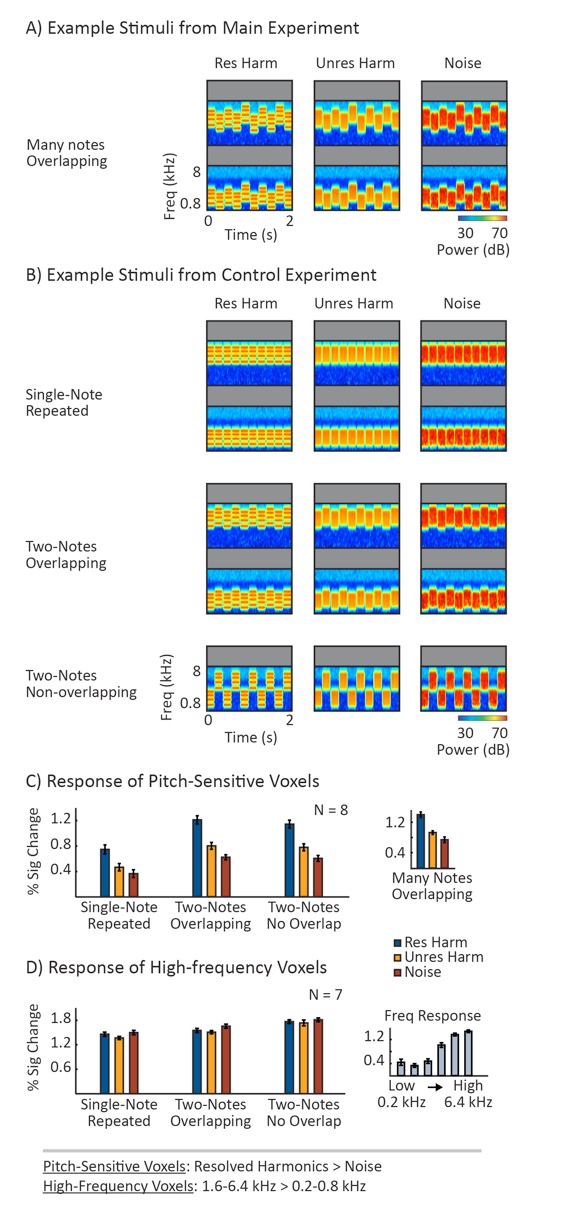-
(A) Cochleograms illustrate the note-to-note frequency and pitch variation present for all of the stimuli in the main experiment. Because resolved harmonics have sparser spectra, they will tend to overlap less with other notes in the sequence. Greater responses to resolved harmonics could thus potentially be explained by reduced frequency adaptation.
-
(B) We tested whether pitch regions respond more to resolved harmonics for stimuli without any pitch and frequency variation (single-note repeated), thereby removing any adaptation-related confounds. We also directly manipulated spectral overlap for stimuli with two alternating notes, to test whether differences in frequency adaptation have any effect on cortical responses to resolved and unresolved harmonics. In one condition (two-notes overlapping), the notes were designed to minimize overlap for the resolved condition while maximizing overlap for the unresolved condition. In the other condition (two-notes non-overlapping), the notes never overlapped. Thus any resolvability bias due to frequency adaptation should be maximal for the overlapping conditions, and absent for the non-overlapping conditions.
-
(C) The response of pitch-sensitive voxels to the 3 sets of control conditions. In all cases, responses to resolved harmonics were substantially larger than responses to unresolved harmonics. For the two-note conditions, the overlap-type had very little effect on the cortical response. This demonstrates that differences in overlap between resolved and unresolved harmonics have very little effect on the response of pitch regions. The overall response to the two-note conditions was larger than the response to the one-note condition, consistent with prior reports1,2,3. This demonstrates that stimuli with pitch and frequency variation are more effective at driving the response of pitch regions (and thus are better suited to localize them), but do not bias their response towards resolved harmonics.
-
(D) Frequency adaptation also does not bias the response high-frequency-preferring voxels towards resolved harmonics. For all three types of note variation, responses were slightly higher for the noise stimuli compared with the pitch stimuli (consistent with the results from the main experiment, see Figure 6C).
1Patterson RD, Uppenkamp S, Johnsrude IS, Griffiths TD (2002) The processing of temporal pitch and melody information in auditory cortex. Neuron.
2Warren JD, Griffiths TD (2003) Distinct mechanisms for processing spatial sequences and pitch sequences in the human auditory brain. J Neurosci.
3Puschmann S, Uppenkamp S, Kollmeier B, Thiel CM (2010) Dichotic pitch activates pitch processing centre in Heschl’s gyrus. Neuroimage.

